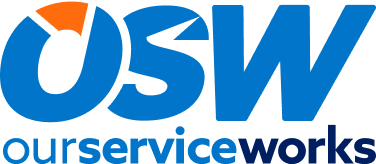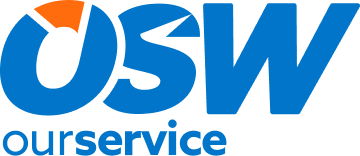When you have a good product and a superb website, the next step is to offer total customer satisfaction throughout the buying process. This means an efficient order fulfillment strategy backed by excellent customer service to bolster your brand and differentiate your business. According to statistics, more than 80% of American adults order products online. They will only purchase from the same stores repeatedly if they are satisfied with the brand and the overall service they receive throughout the purchasing, fulfillment, and shipping experience.
Therefore, it’s imperative to structure a flawless order fulfillment process for delivering your products to customers.
What Is Order Fulfillment?
Order fulfillment involves the entire process spanning from order placement, packing, and shipping, to delivery of the product ordered from a website by a customer. The process is only considered complete when the customer finally receives the product(s) ordered. Additionally, in some cases the client may decide (for a variety of reasons) to return the product or have questions about the brand. It’s important to handle such situations expeditiously and professionally to maintain customer loyalty.
Order fulfillment isn’t a one-off process. It involves a series of steps. Efficiency in the handling of these processes determines the success of a business venture. The steps involved include:
Important Steps in the Order Fulfillment Process
Receiving Inventory
The entire process of order fulfillment begins with receiving your products into storage. In fact, receiving is arguably the most important step in the fulfillment process – if you get this step wrong all subsequent steps are at risk. At this point, it’s important to ascertain that the products are in excellent condition and received into inventory in the correct quantity. Products should be carefully inspected, barcodes and quantities should be recorded in a warehouse management system (WMS) and then assigned to a specific storage location for later retrieval when ordered.
Warehousing Storage
In some cases, products may be ordered and shipped relatively quickly and in others, storage many be required for an intermediate period prior to being ordered for delivery. Warehouses come in all sizes and conditions, so it’s important that your products are stored in an environment most conducive to them and ready for immediately ready for shipment while awaiting orders. Warehousing storage environments range from dry to climate controlled to refrigerated and frozen.
Order Processing
Order processing begins when your customer’s order is received into your web shopping cart. These orders are ideally then electronically sent to the and order management system to begin the actual fulfillment process. An efficient and effective order processing system enables instantaneous order receipt and rapid resource deployment to immediately begin the process of fulfilling your orders.
Shopping cart integration is imperative to minimize errors and maximize efficiencies between your online shop and your outsourced order fulfillment company. Integration can be conducted via:
- Web service (a method of exchanging information over the Web)
- API (an application programming interface which is simply another method of linking two systems together over the Web and may include a third-party integration service like Zapier)
- FTP/CSV upload (a more manual method where a CSV file is uploaded for each order and this file is transferred to the fulfillment company)
Many order fulfillment companies utilize sophisticated WMS (warehouse management systems) that have pre-existing integrations with most web stores.
Picking
The picking process is the entire process whereby the warehouse staff prints, pulls, and picks the order and prepares it for shipping. Picking should ideally use a system generated picking slip to select the specific products ordered by the client. This slip identifies the location of each product in the facility and oftentimes uses a barcode scanning technology to ensure the accuracy of each item picked.
Packing
During the packing process, individuals should be trained to select the appropriate quantity and type of void fill materials to provide protection during transit while adding the least additional weight to the overall package. This keeps products well-protected during transit while helping contain overall shipping fees.
Shipping
The shipment method used depends on the destination of the product, targeted receipt time and client preferences. Most companies utilize all the major shipping companies but generally concentrating volumes between them to achieve the best rates. Warehouses located on either coast will have an extended delivery times and expense shipping to opposite end of the country.
Warehouses centrally located are generally able to provide faster, more economical options across the entire country. At this stage, you will also receive electronic shipment confirmation and shipment tracking information to provide to your customer. The order fulfillment process is complete when the customer receives and accepts the product and confirmation of receipt is provided
Returns Processing
Some customers may decide to return products received for any number of reasons. You will need to offer this service as well. Your brand will be well-served to handle returns from your customer with professional, effective, and efficient processes that leave the customer satisfied with overall process and ongoing commitment to your brand.
Customer Service Support
Some customers may have questions during the ordering process or post-sale. Quick responses and guidance will reinforce your brand and build customer loyalty through every interaction. Having great customer support is a must whether you handle this internally or rely on a professional team experienced in order fulfillment.
What Are the Different Order Fulfillment Models?
There are several different order fulfillment models and options available to you as an online merchant. You should choose what works for your individual situation. The more efficient the model, the easier it will be for your business to prosper.
In-House Order Fulfillment Model
In this case, a business employs its people to handle the order fulfillment process. In simple terms, the company receives, stores, packs, and ships the commodities using its employees. The model is ideal for a firm with the capacity to handle all these processes efficiently.
It is mainly an option for small companies that are just starting up or very large ones with sufficient financial scale and operational scope to manage varied functional costs effectively. As the scale of operation increases, most small to mid-sized companies decide to outsource order fulfillment services with a reliable third parties.
The in-house model has ongoing fixed costs and new investments irrespective of order volume or other business conditions. For example, leased costs are fixed under an in-house management, whereas they become variable (you only get charged for what you use) under an outsourced order fulfilment model.
Outsourced Order Fulfillment (3PL)
As a business owner, you may decide to handle the order fulfillment process through third-party logistics (3PL). It could be because you don’t have adequate storage space, specialized personnel, and systems to handle the order fulfillment.
Costs associated with this model are almost entirely variable; as your volume increases or decreases, fulfillment expenses will correspondingly increase or decrease. Moreover, this arrangement places the responsibility and accountability for the entire order fulfillment process with your vendor partner, relieving you of fixed financial costs and daily operational responsibility. It will allow you to manage the business relationship with your provider, holding them accountable for operational performance on an ongoing basis. This will allow you to focus on brand marketing, product development and acquisition and overall supplier management.
Drop-Shipping
In drop-shipping, inventory management isn’t necessary. Under the drop-shipping model, your product supplier ships orders on an as needed basis. Your cost per unit is significantly higher, but under this methodology you do not have to purchase a bulk of product. Furthermore, you are relying upon a product manufacturer/supplier to fulfill orders to your customers, which comes with risks. However, when businesses are starting up, testing the waters may best be done using this method.
Businesses that want to be hands-off in the order fulfillment process choose this model. As a business owner, your greatest challenge will be to market the goods and bring in company sales. Start-ups prefer this model because it’s less costly and involves significantly lower risk.
When you choose this model, you should be aware that you aren’t in control of the order fulfillment services. Inefficiency during the shipment process may hurt your brand name.
What Are the Pricing Models for Outsourced Order Fulfillment?
Order fulfillment costs aren’t “cookie-cutter”. Costs depend on specific factors, including the type of model you choose. If you choose 3PL, the cost includes the expenses involved in receiving the inventory, storage charges, packing costs, and shipment charges. Essentially, the order fulfillment provider charges you a fee for every service they perform for you during the month.
The Main Challenges of Order Fulfillment
The process of order fulfillment comes with its challenges. First, inventory management may become a problem. For instance, the demand for the product may be higher than the rate of production. If customers don’t get the products they are looking for, you may lose them to your competitors. To attain success, you should always have adequate stock. A robust inventory management system will guide you through this process. Many 3PL’s have cloud-based systems that provide detailed reporting and par-level alerts helping you always maintain the correct amount of stock.
At times, you may also experience the problem of overstocking/understocking. Conduct extensive market research and understand the demand level of the product to adequately stock your product. Alternatively, where the demand is low, a robust marketing campaign can help.
A slow shipping process can also make customers avoid your products. To increase efficiency, you should hire the best order fulfillment services. Order fulfillment companies can generally process orders on a same day basis if they are received by a certain cut-off time, and their relationship with shipping carriers put them in a better position to take advantage of shipping discounts and options and avoid potential problems that arise in the broader business environment. With proper planning, they ensure customers receive their products at the right time.





